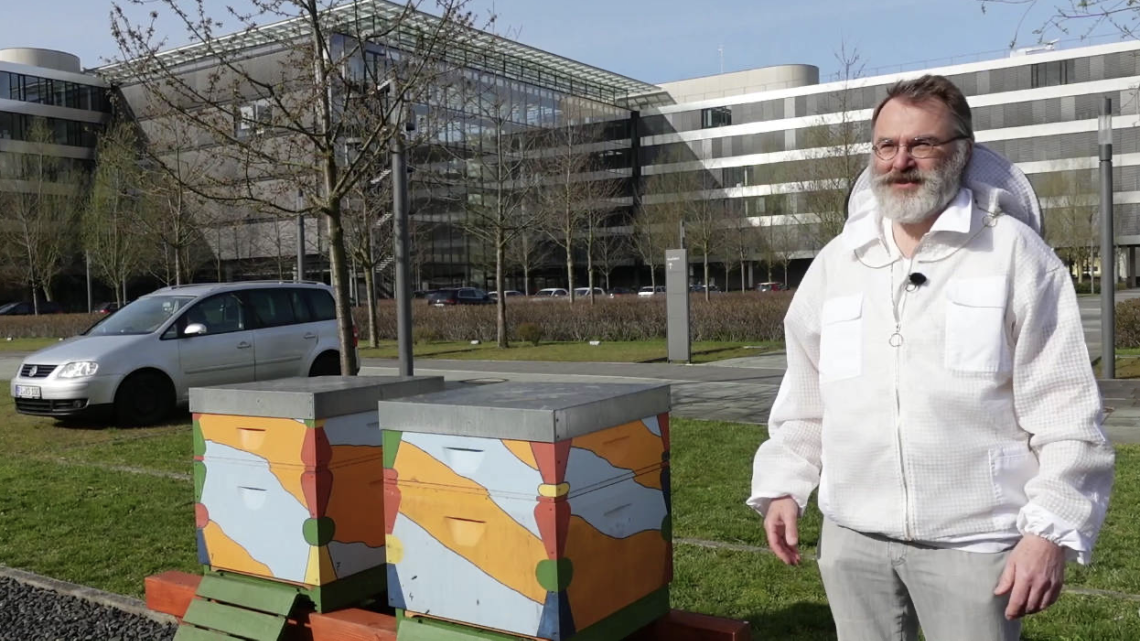Hannover: HDI team augmented by 10,000 busy bees
Thanks to the Group’s dedicated sustainability community, two bee colonies will be going about their business at HDI-Platz 1 in Hannover in future. The “busy bees” are not terribly high profile. But they produce a very tangible benefit.

Dr Klaus von Schierstedt is a passionate amateur beekeeper and head of department at HDI Systeme
After all, the work of the diligent little creatures is now more important than ever before. They are irreplaceable when it comes to pollinating flowers, fruit trees and food crops. Dr Klaus von Schierstedt is a passionate amateur beekeeper and head of department at HDI Systeme. He believes that the life of bees “offers a steady string of surprises, and presents a fantastic and completely unique cosmos”.
He planned and organised setting up the beehives together with Jan Philip Schwencke from Talanx subsidiary Ampega – representative of the building’s owner at HDI-Platz, Helge Steinkraus from Internal Services and Julius Hansen from Group Sustainability.
While lots of companies have to rely on hired bee colonies, HDI had a stroke of luck. Von Schierstedt presented the Group with two of his brightly painted beehives on permanent loan and simultaneously took on the care of his velvety protégées. He thinks that these insects are well equipped for a life at HDI-Platz and is also aware of the advantages of “city bees”: “Out in the countryside, rapeseed plants, for example, bloom for around two weeks. After this crop has flowered, there’s hardly anything more on offer for the bees in this particular area. In the city, there’s generally a much more diverse range of plants available over the entire season.”
And adequate nutrition is absolutely essential for the life’s work of these impressive creatures. “In winter, a colony has around 5,000 bees. In summer, there are around 50,000 bees. A bee in summer has a lifespan of about 30 days. By contrast, the winter bees have to overwinter for several months and raise the brood that will inherit the colony in spring and take over the work of the hive,” according to von Schierstedt.
The area around the building is being prepared so that the bees will feel at home. “We are planning to introduce a number of flowering plants in the area at the back of the HDI site. Other ideas are always very welcome in the sustainability community,” emphasised von Schierstedt. The sustainable use of buildings and sites is one of the many building blocks in the Talanx Sustainability Strategy. Alongside green landscaping of roofs, the establishment of endangered animal species, such as domestic honey bees, is also an important element.
Incidentally: What happens to the honey has not been decided yet. “There are a number of different possibilities. Colleagues in the canteen could make use of it. We could give it away in jars as HDI honey. Or we could present it to employees. However, only a limited amount of honey can of course be harvested from two beehives.”